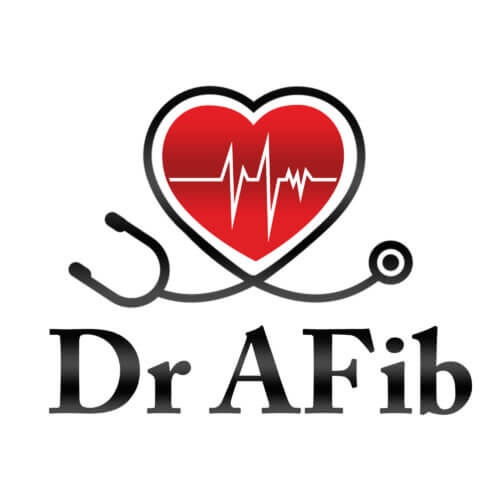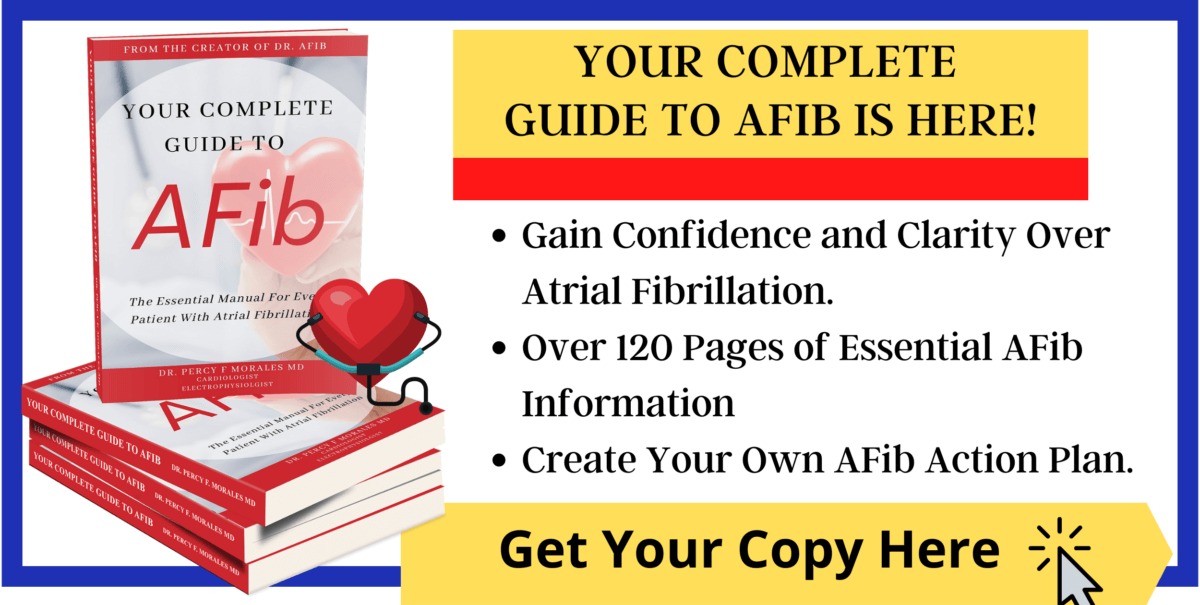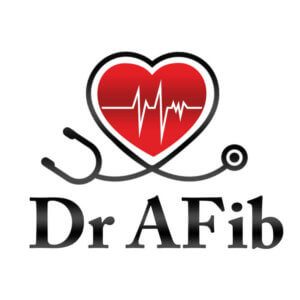Understand more about using cardizem for AFib. Calcium channel blockers are a commonly prescribed atrial fibrillation medication — but are they the best (or the safest) option for every AFib patient?
When someone is newly diagnosed with atrial fibrillation, a wide variety of cardiac medications can be recommended as part of a personalized treatment plan. As one of the available options, calcium channel blockers (like Cardizem for AFib) can help you manage the racing and irregular heart rate associated with atrial fibrillation — something that can help with the long-term management of the disease.
If you or someone you love has been diagnosed with AFib, this is a must-read article. Full of essential information about how calcium channel blockers work, their potential side effects to look out for, and alternative medications you can try if they aren’t working, I hope this article acts as a helpful resource as you learn to improve symptoms of atrial fibrillation.
What are Calcium Channel Blockers?
Calcium channel blockers are a group of medications that can be used for high blood pressure, as well as controlling heart arrhythmias, such as AFib. Designed to interact with cardiac tissue on a cellular level, calcium channel blockers are considered to be a safe and effective medication for the management of many different heart conditions. Most commonly taken as an oral medication, they are also available as intravenous (IV) medications in a controlled medical setting such as in an emergency room or hospital.
How Calcium Channel Blockers Work:
As one of the essential electrolytes found within the body, calcium is needed for healthy cardiac function. When dissolved in water, calcium gains a positive charge — a feature used by the body to help transport other elements in and out of cells as the body tries to restore electrolyte balance.
When functioning correctly, calcium and sodium ions move in and out of your cardiac cells opposite each other, resulting in consistent and regular heart rhythm. But, for those living with heart arrhythmias like atrial fibrillation, the heart rate is no longer regular or controlled — a situation that can be improved by adjusting the amount of calcium entering and leaving the cardiac muscle.
Within the calcium channel blocker group, there are two major drug categories:
-
Dihydropyridines — This group of medications primarily impacts vasodilation and blood pressure rather than cardiac function and rhythm. Because of this, these medications are commonly used to treat high blood pressure, not used to treat atrial fibrillation.
Examples of dihydropyridine calcium channel blockers include:
-
Felodipine
-
Nifedipine
-
Nicardipine
-
Amlodipine (Also called Norvasc)
-
Nisoldipine
-
Non-dihydropyridines — Alternatively, non-dihydropyridine calcium channel blocker medications are less effective vasodilators, instead offering an increased ability to slow a person’s heart rate. Because of this, this is the group of calcium channel blockers that are most commonly used to treat arrhythmias like atrial fibrillation.
The most popular examples of non-dihydropyridine calcium channel blockers include:
-
Diltiazem (Also called Cardizem)
-
Verapamil
When taken as prescribed by your doctor, non-dihydropyridine calcium channel blockers will block some (but not all) calcium channels in your cardiac tissue, resulting in a slower heart rate, increased vasodilation, and a drop in resting blood pressure. Over time, these medications will help to stabilize your heart rhythm and reduce your symptoms of atrial fibrillation, as well as reduce the rapid heart rate associated with atrial fibrillation.
Your Complete Guide To AFib: The Essential Manual For Every Patient With Atrial Fibrillation
$15.95 (as of May 29, 2025 06:52 GMT -06:00 – More infoProduct prices and availability are accurate as of the date/time indicated and are subject to change. Any price and availability information displayed on [relevant Amazon Site(s), as applicable] at the time of purchase will apply to the purchase of this product.)What Cardiac Conditions do Calcium Channel Blockers Treat?
Because calcium channel blockers offer both heart rate and blood pressure benefits, they are commonly used for a wide range of heart conditions. Examples of cardiac conditions that can be successfully treated with calcium channel blockers include:
-
Chest pain or angina
-
Coronary artery disease
-
High blood pressure (hypertension)
-
Migraines
-
Heart arrhythmias like atrial fibrillation, atrial flutter, or supraventricular tachycardia (SVT)
-
Ectopic heart beats such as premature atrial complexes (PACs) or premature ventricular complexes (PVCs)
Commonly Used Calcium Channel Blockers for Atrial Fibrillation
While there are many different specific calcium channel blockers, only a few are commonly prescribed for atrial fibrillation patients. Examples of the most commonly used calcium channel blockers for AFib include:
-
Cardizem for AFib — Also known as Diltiazem (which is its generic drug name), Cardizem is the most popular calcium channel blocker used by patients with atrial fibrillation. Capable of being taken both orally or intravenous, Cardizem offers AFib patients improved heart rate control when taken as directed. The intravenous form can also rapidly reduce the heart rate associated with AFib with RVR.
-
Verapamil for AFib — Verapamil (also known as Isoptin or Calan) is the other most commonly used calcium channel blocker for the treatment of atrial fibrillation. As a powerful medication capable of slowing a person’s heart rate and reducing their blood pressure, additional monitoring to watch out for hypotension (low blood pressure) is needed when taking this medication in higher doses.
The Side Effects of Taking Calcium Channel Blockers:
Unfortunately, despite their relatively high level of safety and efficacy, it is possible to develop side effects while taking calcium channel blockers. In order to stay safe while starting this treatment option, it is essential that you and your family be educated about the following possible side effects to watch out for.
Examples of mild side effects of calcium channel blockers that you should report to your doctor include:
-
Feeling dizzy or light-headed
-
Weight gain
-
Swelling of the legs, ankles, and feet
-
Nausea and abdominal discomfort
-
An increase in appetite
-
Feeling drowsy or fatigued
-
Constipation
-
Changes to your heart rate (faster, slower, or irregular patterns)
-
Coughing and wheezing
-
Numbness and tingling in the hands and feet
Additionally, while taking calcium channel blockers, consuming alcohol should be minimized or avoided due to an increased risk of more severe side effects and interactions. If you or someone you love has been recommended calcium channel blockers to treat their AFib symptoms, discuss the medications you already take and your lifestyle habits (including your alcohol consumption) with your doctor to ensure that they are the right fit for your needs.
Alternative Options for Calcium Channel Blockers:
Depending on your medical background and history, calcium channel blockers may not be the best option for managing your AFib symptoms. Instead, other prescription medications can be used, including:
-
Beta blockers — As another form of cardiac medication capable of impacting your heart rate and blood pressure, many patients find that beta blockers are a safe and effective alternative for managing their AFib symptoms. Read more about beta-blockers for AFib here.
-
Digoxin — Known for being a powerful cardiac medication to control heart rate, digoxin can be an effective treatment option for atrial fibrillation. To take this medication, a large amount of monitoring and blood work needs to be performed to reduce the risk of experiencing digoxin toxicity side effects. Read more about Digoxin here.
-
Anti-arrhythmic Medications: Stronger AFib rhythm medications, such as the anti-arrhythmic medications flecainide, propafenone, sotalol, multaq, or amiodarone can be used as an alternative to calcium channel blockers in some cases.
The Guide To Reverse Atrial Fibrillation Naturally
If you are interested in natural treatment options for atrial fibrillation and are highly motivated in improving your symptoms naturally, to reduce your need for medications or even procedures, then take a look at my one-of-a-kind, online educational program, Take Control Over AFib.
Lifestyle modifications and reducing inflammation are essential components of the long-term management of atrial fibrillation. Addressing the source cause of atrial fibrillation can lead to a significant benefit for most AFib patients. Targeted lifestyle modifications can reduce your symptoms, reduce your reliance on medications or procedures, and even improve the long-term success rate of procedures for AFib. However, most patients are not given instructions or tips on how to accomplish these essential lifestyle modifications in an AFib targeted style.
This is exactly why I created the Take Control Over AFib Program, to give people a step-by-step plan to improve and potentially reverse atrial fibrillation naturally.
Thinking about lifestyle modifications is easy, but putting in place a system to keep you committed to achieve real results takes time and dedication, and with my step-by-step plan, we can achieve powerful and long-lasting results together.

Putting It All Together
Calcium channel blockers are a safe and effective treatment option for atrial fibrillation — but that doesn’t mean they are right for everyone.
Capable of slowing down a racing heart rate and reducing chronically high blood pressure, calcium channel blockers are a commonly explored option when cardiologists and primary care providers work with their patients to create personalized treatment plans.
But, just because calcium channel blockers may work for your friends and family with AFib doesn’t mean they will necessarily work for you. Getting educated about potential side effects and building a trusting and open relationship with your primary care provider are both essential steps to staying safe and healthy while taking any cardiac medication — two pieces of advice that I hope you take away from this article!
The Best Atrial Fibrillation Book
Your Complete Guide To AFib: The Essential Manual For Every Patient With Atrial Fibrillation
$15.95 (as of May 29, 2025 06:52 GMT -06:00 - More infoProduct prices and availability are accurate as of the date/time indicated and are subject to change. Any price and availability information displayed on [relevant Amazon Site(s), as applicable] at the time of purchase will apply to the purchase of this product.) The A to Z guide on everything you need to know about atrial fibrillation. Written by AFib expert Dr. Percy Morales MD. Over 120 pages of essential information on medications, procedures, and lifestyles modifications for AFib. Easy to read for every patient.
Shop AFib Products on Amazon
KardiaMobile 6-Lead Personal EKG Monitor – Six Views of The Heart – Detects AFib and Irregular Arrhythmias – Instant Results in 30 Seconds – Works with Most Smartphones - FSA/HSA Eligible
13% Off
KardiaMobile 1-Lead Personal EKG Monitor – Record EKGs at Home – Detects AFib and Irregular Arrhythmias – Instant Results in 30 Seconds – Easy to Use – Works with Most Smartphones - FSA/HSA Eligible
$79.00 (as of May 29, 2025 05:52 GMT -06:00 - More infoProduct prices and availability are accurate as of the date/time indicated and are subject to change. Any price and availability information displayed on [relevant Amazon Site(s), as applicable] at the time of purchase will apply to the purchase of this product.)
Apple Watch Series 9 [GPS 41mm] Smartwatch with Storm Blue Aluminum Case with Silver Sport Band M/L. Fitness Tracker, Blood Oxygen & ECG Apps, Always-On Retina Display
(as of May 29, 2025 06:52 GMT -06:00 - More infoProduct prices and availability are accurate as of the date/time indicated and are subject to change. Any price and availability information displayed on [relevant Amazon Site(s), as applicable] at the time of purchase will apply to the purchase of this product.)
Fitbit Sense 2 Advanced Health and Fitness Smartwatch with Tools to Manage Stress and Sleep, ECG App, SpO2, 24/7 Heart Rate and GPS, Shadow Grey/Graphite, One Size (S & L Bands Included)

OMRON 2-in-1 Upper Arm Blood Pressure Monitor & 1-Lead EKG Monitor - Clinically Validated Blood Pressure Arm Cuff & Machine - Use OMRON Connect App
18% Off
Samsung Galaxy Watch 6 44mm Bluetooth Smartwatch, Fitness Tracker, Personalized HR Zones, Advanced Sleep Coaching, Heart Monitor, BIA Sensor, Health Wellness Insights, Big Screen, US Version, Graphite
12% Off
Natural Rhythm Triple Calm Magnesium 150 mg - 120 Capsules – Magnesium Complex Compound Supplement with Magnesium Glycinate, Malate, and Taurate. Calming Blend for Promoting Rest and Relaxation.
$20.77 ($0.17 / Count) (as of May 29, 2025 05:52 GMT -06:00 - More infoProduct prices and availability are accurate as of the date/time indicated and are subject to change. Any price and availability information displayed on [relevant Amazon Site(s), as applicable] at the time of purchase will apply to the purchase of this product.)
Pure Encapsulations Magnesium (Glycinate) - Supplement to Support Stress Relief, Sleep, Heart Health, Nerves, Muscles, and Metabolism* - with Magnesium Glycinate - 180 Capsules
$44.60 ($0.25 / Count) (as of May 29, 2025 06:52 GMT -06:00 - More infoProduct prices and availability are accurate as of the date/time indicated and are subject to change. Any price and availability information displayed on [relevant Amazon Site(s), as applicable] at the time of purchase will apply to the purchase of this product.)
















![Apple Watch Series 9 [GPS 41mm] Smartwatch with Storm Blue Aluminum Case with Silver Sport Band M/L. Fitness Tracker, Blood Oxygen & ECG Apps, Always-On Retina Display #1](https://m.media-amazon.com/images/I/311xwtp4mFL._SL100_.jpg)
![Apple Watch Series 9 [GPS 41mm] Smartwatch with Storm Blue Aluminum Case with Silver Sport Band M/L. Fitness Tracker, Blood Oxygen & ECG Apps, Always-On Retina Display #2](https://m.media-amazon.com/images/I/41j+8AaUGsL._SL100_.jpg)
![Apple Watch Series 9 [GPS 41mm] Smartwatch with Storm Blue Aluminum Case with Silver Sport Band M/L. Fitness Tracker, Blood Oxygen & ECG Apps, Always-On Retina Display #3](https://m.media-amazon.com/images/I/41jIyxZitnL._SL100_.jpg)
![Apple Watch Series 9 [GPS 41mm] Smartwatch with Storm Blue Aluminum Case with Silver Sport Band M/L. Fitness Tracker, Blood Oxygen & ECG Apps, Always-On Retina Display #4](https://m.media-amazon.com/images/I/41IpNJERjCL._SL100_.jpg)
![Apple Watch Series 9 [GPS 41mm] Smartwatch with Storm Blue Aluminum Case with Silver Sport Band M/L. Fitness Tracker, Blood Oxygen & ECG Apps, Always-On Retina Display #5](https://m.media-amazon.com/images/I/31o17yhfYpL._SL100_.jpg)






































